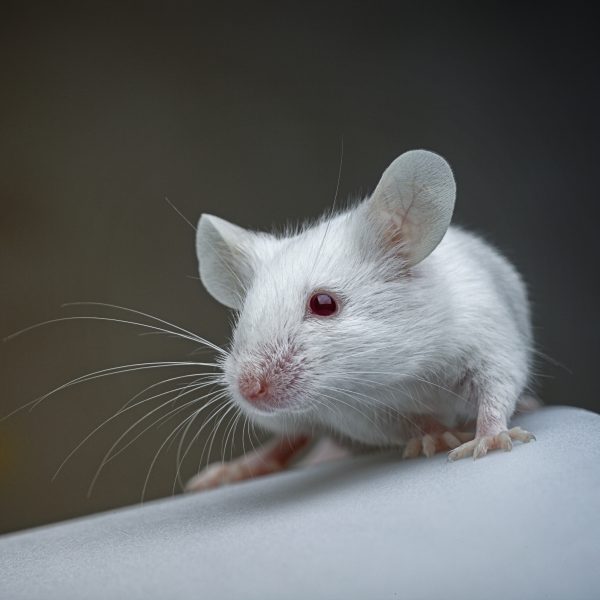
Pictures taken from the artist Heather Dewey-Hagborg´s work «Stranger visions». With kind permission from the artist.*
New methods for using DNA in police work: What are the technical, legal and ethical challenges?
Dates and times:
Wednesday 23, 11AM-13.15 PM (Oslo time): Talks followed by Q&A
Thursday 24, 11AM-13.30 PM (Oslo time): Talks followed by Q&A
Friday 25, 11AM-12.30 PM (Oslo time). DNA in police work. Roundtable discussion
Place: Online (link below)
Organizers: The Nordic Committee on Bioethics and The Norwegian Biotechnology Advisory Board
This is a public event and free of charge.
In the mid-1980s, a method for identifying individuals through DNA analysis was invented. Today, DNA fingerprinting is used all over the world in cases involving criminal activity and missing persons.
These tests use part of the DNA, previously known as junk DNA, that don’t code for actual characteristics in people. This has been viewed as a strength of the method in light of privacy considerations.
However, in recent years new methods for using DNA in police work have been developed. We now have the ability to search for a partial match of a DNA profile and identify potential family members, whether in police or private ancestry databases. Another method, known as DNA phenotyping, involves genetic testing that can provide information about what an unknown suspect might look like. This method may be useful when there is no matching DNA profile in the databases.
Both methods have been used to help solve cases. In Europe, however, only a few countries have amended its legislation to allowed new uses of DNA testing. In many countries the legal framework is uncertain.
The use of new DNA methods raises questions relating to technology, legal framework and ethics.
We will focus on the ethics of the subject and have invited people with different backgrounds to discuss topics such as:
- Which challenges are well known from police work today and which are new?
- Regulation and practice in the Nordics and in Europe
- Privacy and genetic integrity
- Profiling and discrimination: Is this technology neutral or are there embedded biases?
- The ethics of visual representations: Are visual traits less stigmatising? Or the opposite?
- Technologisation: A space left for human judgment?
- Good and bad practice: The ethics of context and communication
Programme
Wednesday 23, 11AM-13.15 PM (Oslo time): Talks followed by live panel discussion
Moderator: Sigurður Kristinsson, NCBIO
- Welcome
- Key note: Matthias Wienroth, VC Senior Fellow, Centre for Crime & Policing, Department of Social Sciences, Northumbria University, Newcastle upon Tyne, UK
«The Ethical Governance Imperative: Forensics & Surveillance at a Crossroads» - Q&A
Break
- Jari Louhelainen, Biochemistry, University of Helsinki, Faculty of Science, University of Liverpool: «Who was Jack the Ripper? New opportunities in forensic DNA analysis: from drownings to wolfs»
12.00-13.15 Perspectives from the Nordics
- Björgvin Sigurðsson, Reykjavik municipal police: «Forensic DNA in Iceland: Past, present and possible future»
- Andreas Tillmar, University of Linköping, Sweden. «Application of investigative genetic genealogy in Sweden»
- Turid Haugen Tor, The National Criminal Investigation Service (KRIPOS) Norway: «DNA in police work in Norway»
- Q&A
Thursday 24, 11AM-13.30 PM (Oslo time): Talks followed by live panel discussion
Moderator: Madeleine Hayenhjelm, NCBIO
- Welcome
- Key note: Amade M´charek, prof. of Anthropology of science, University of Amsterdam
- «Race Trouble and Forensic Genetics: The Case of Investigative Methods”
- Q&A
Break
- Thomas Berg, Centre for forensic science, UiT The Arctic University of Norway: «Forensic DNA Phenotyping: Towards predicting human appearance from crime scene DNA»
12.00-13.30 Ethical perspectives
- Mareile Kaufman, PRIO and Department of criminology and sociology of law, University of Oslo: «The digitization of DNA evidence – What is at stake?»
- Gabrielle Samuel, Kings college London: «Ethical and social challenges of ´new´ forensic genetic technologies»
Break
- Roos Hopman, University of Amsterdam: «Accuracy, commonality, and valuing: the differing logics of forensic DNA phenotyping»
- Jens Erik Paulsen, The Norwegian Police University College, Oslo: «Trustworthiness, emergent technology and the Dirty Harry Problem»
- Q&A
Friday 25, 11AM-12.30PM: DNA in police work. Live webinar
Moderator: Truls Petersen, NCBIO / The Norwegian Biotechnology Advisory Board
- Welcome
- Comments from invited guests
- Eirik Natås Hanssen, scientist, Oslo University Hospital, Norway
- Heather Dewey-Hagborg, artist, USA
- Shoaib Sultan, politician, Norway
- Per Arne Kalbakk, ethics editor NRK, Norway
- Live roundtable discussion
Contacts:
Truls Petersen: +47 97088101 / truls.petersen@bioteknologiradet.no
Madeleine Hayenhjelm: madeleine.hayenhjelm@umu.se
Sigurður Kristinsson: sigkr@unak.is
* In her work «Stranger Visions» the artist Heather Dewey-Hagborg collected hairs, chewed up gum, and cigarette butts from the streets, public bathrooms and waiting rooms of New York City. After extracting DNA from them she made portraits representing what those individuals might look like, based on genomic research. Read more about the project here.
An article in norwegian about her work can be read here.





